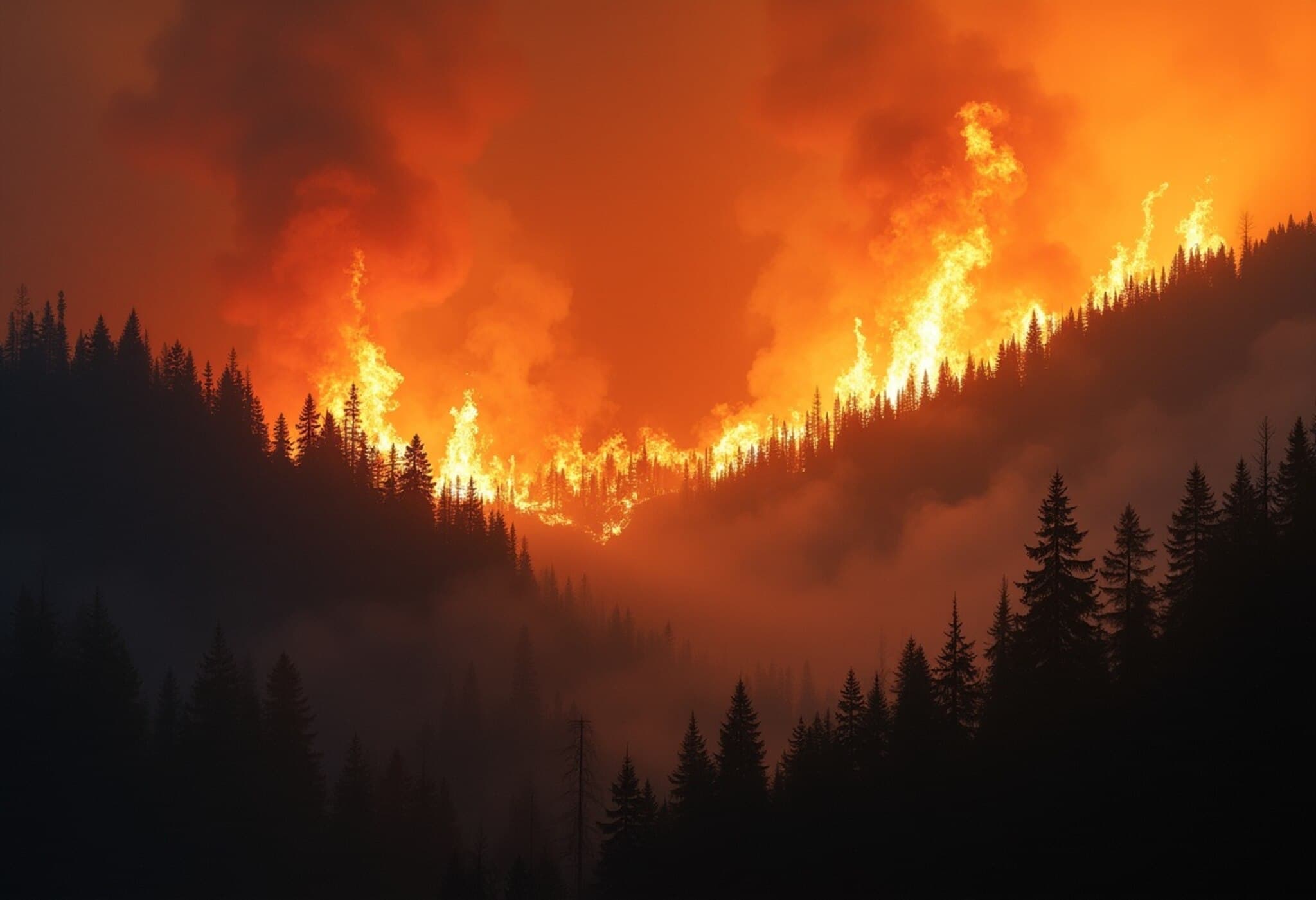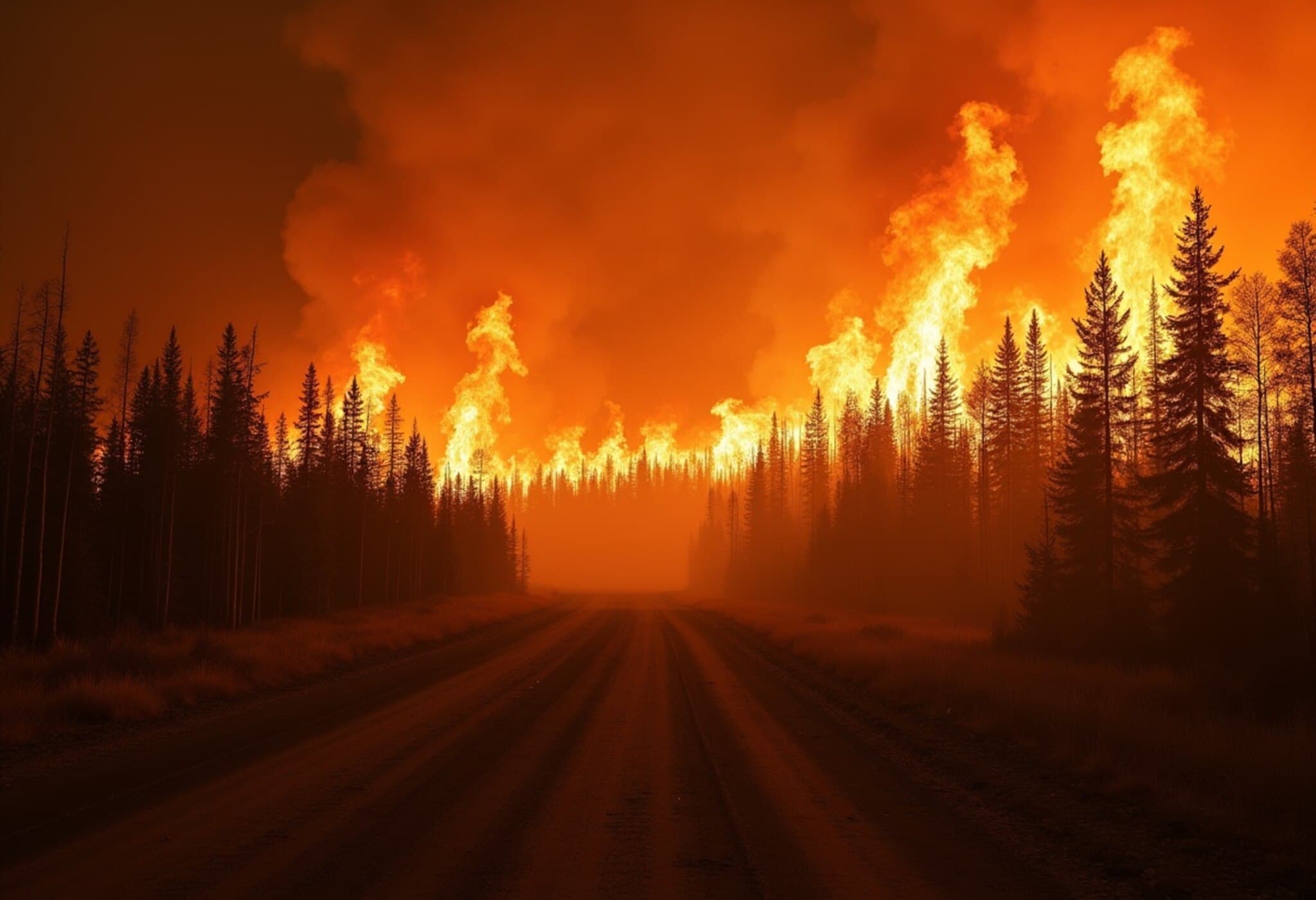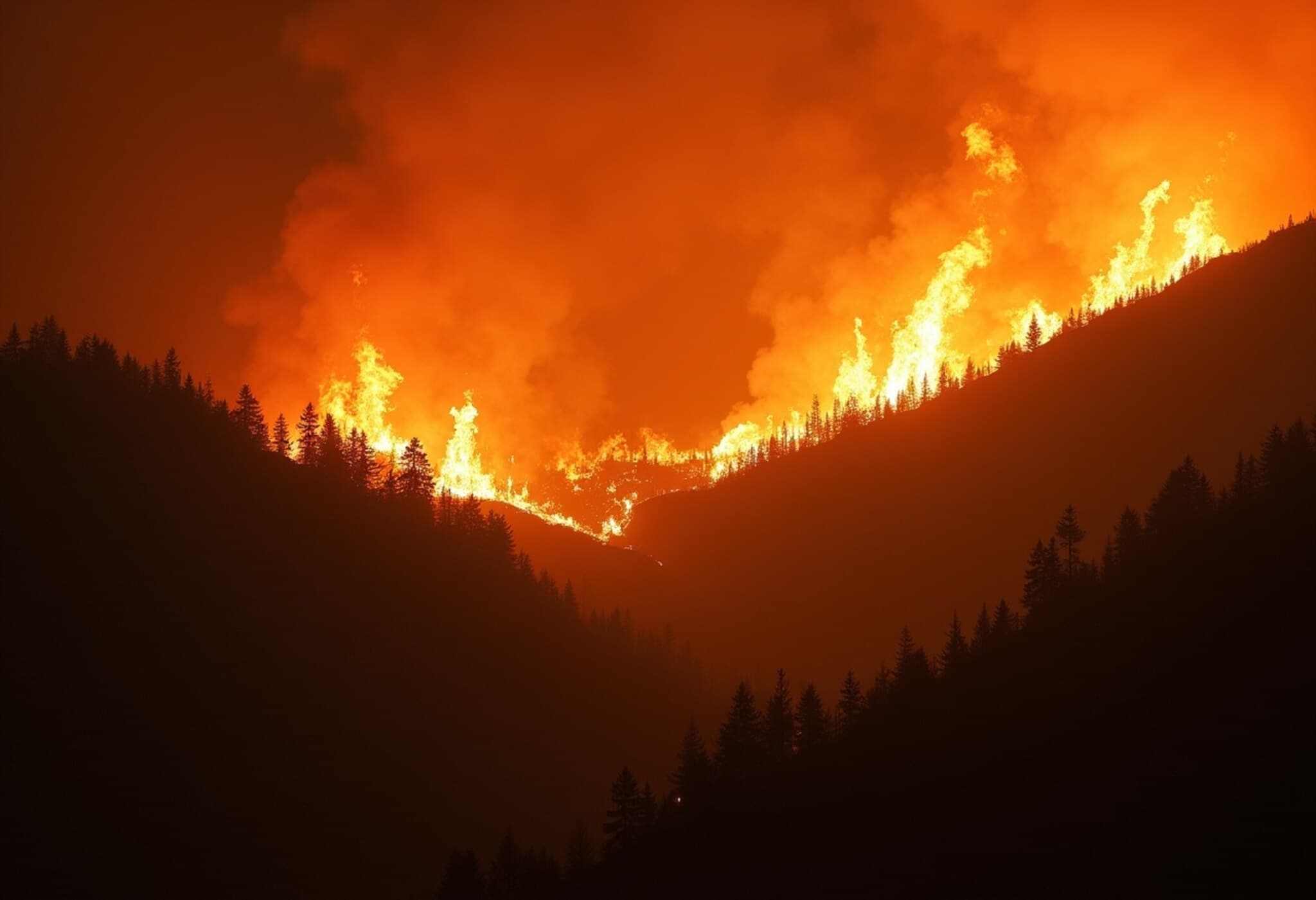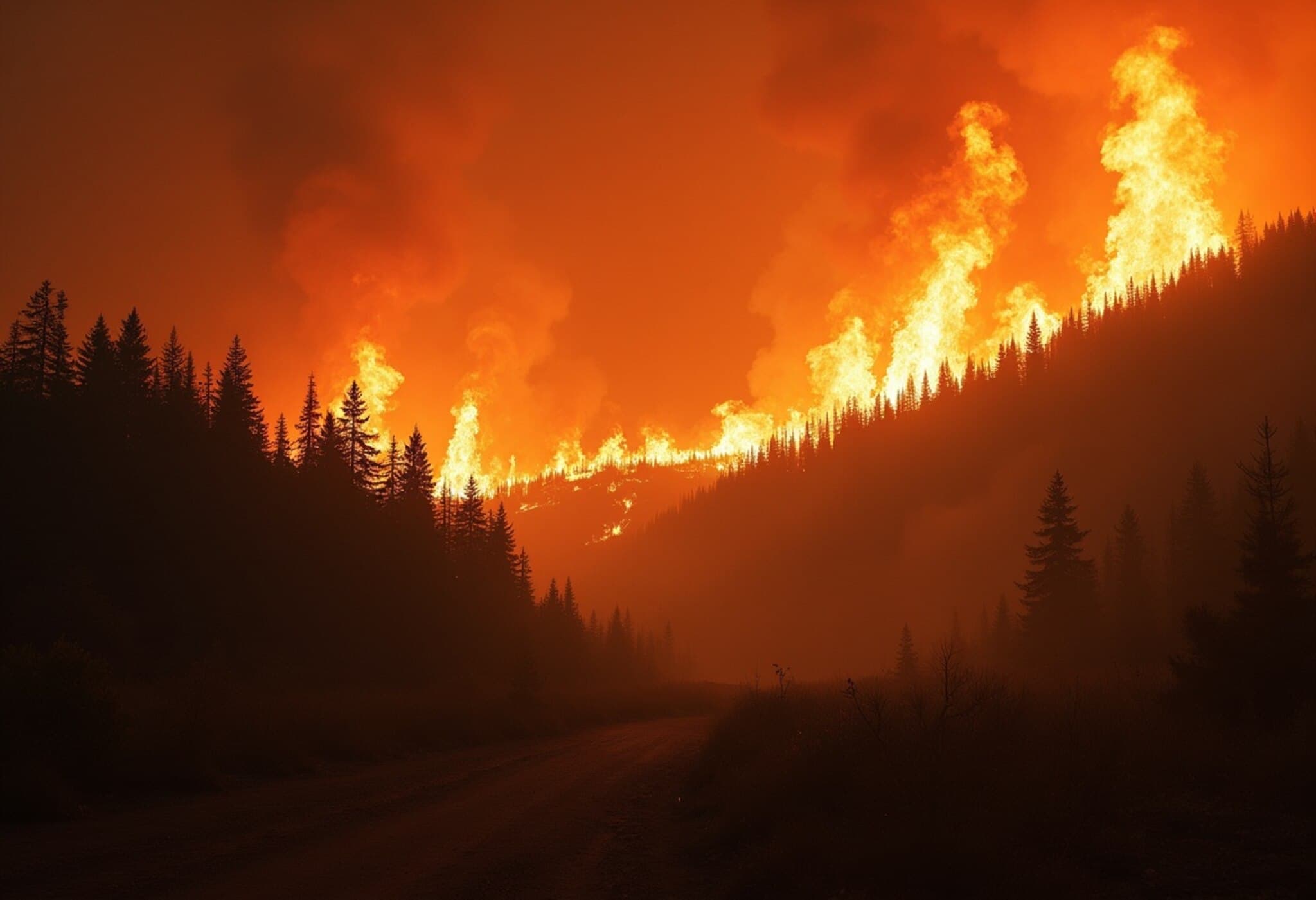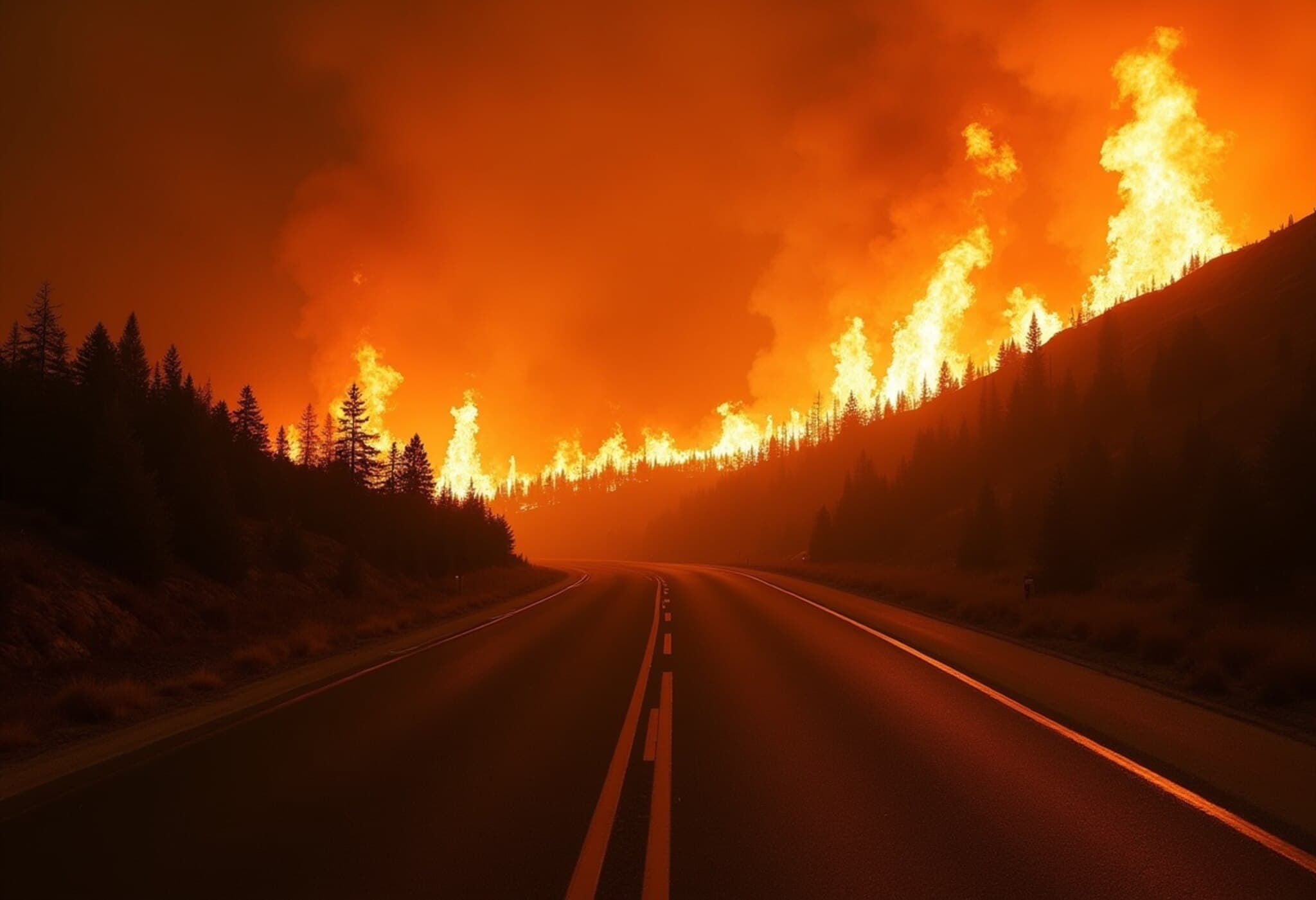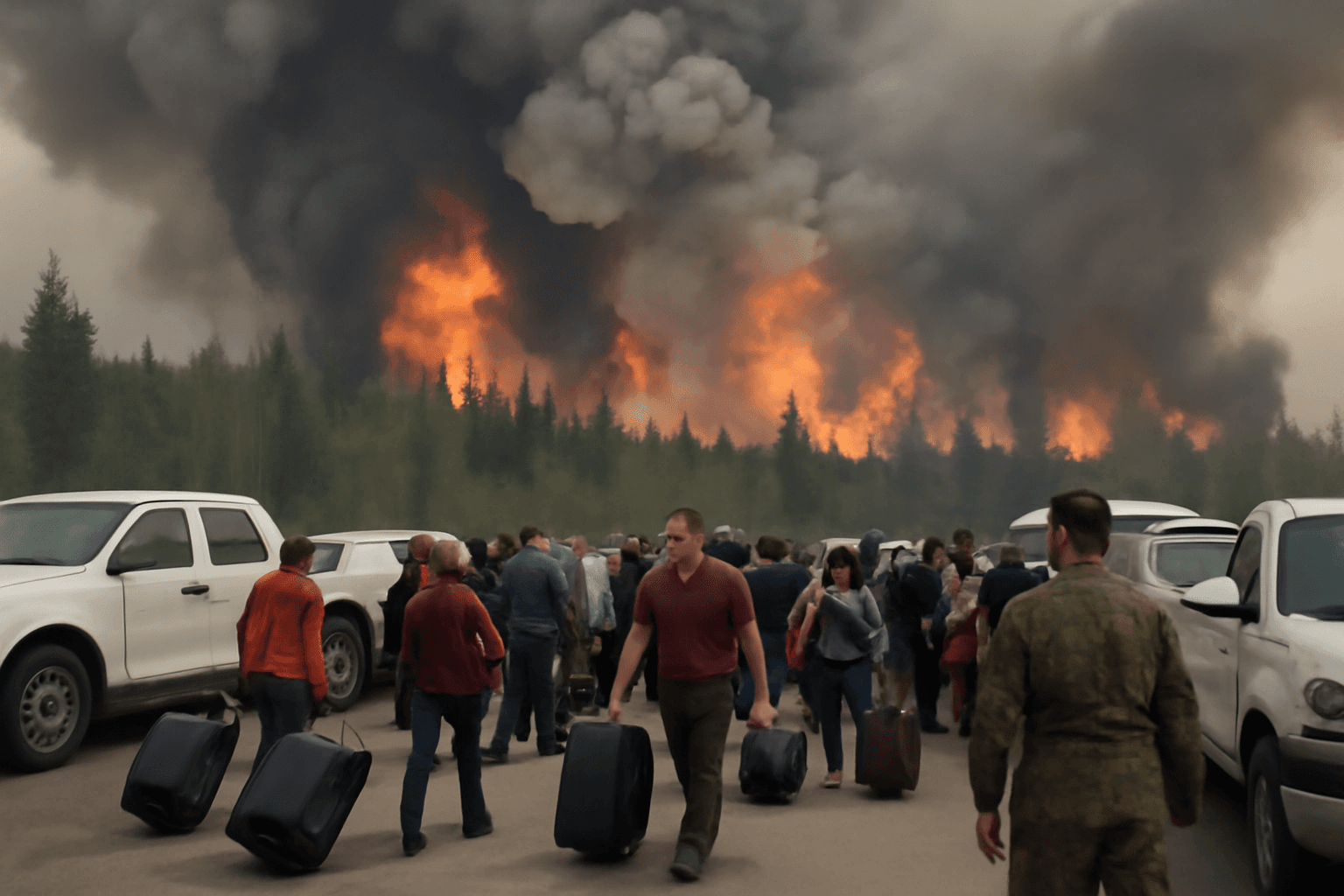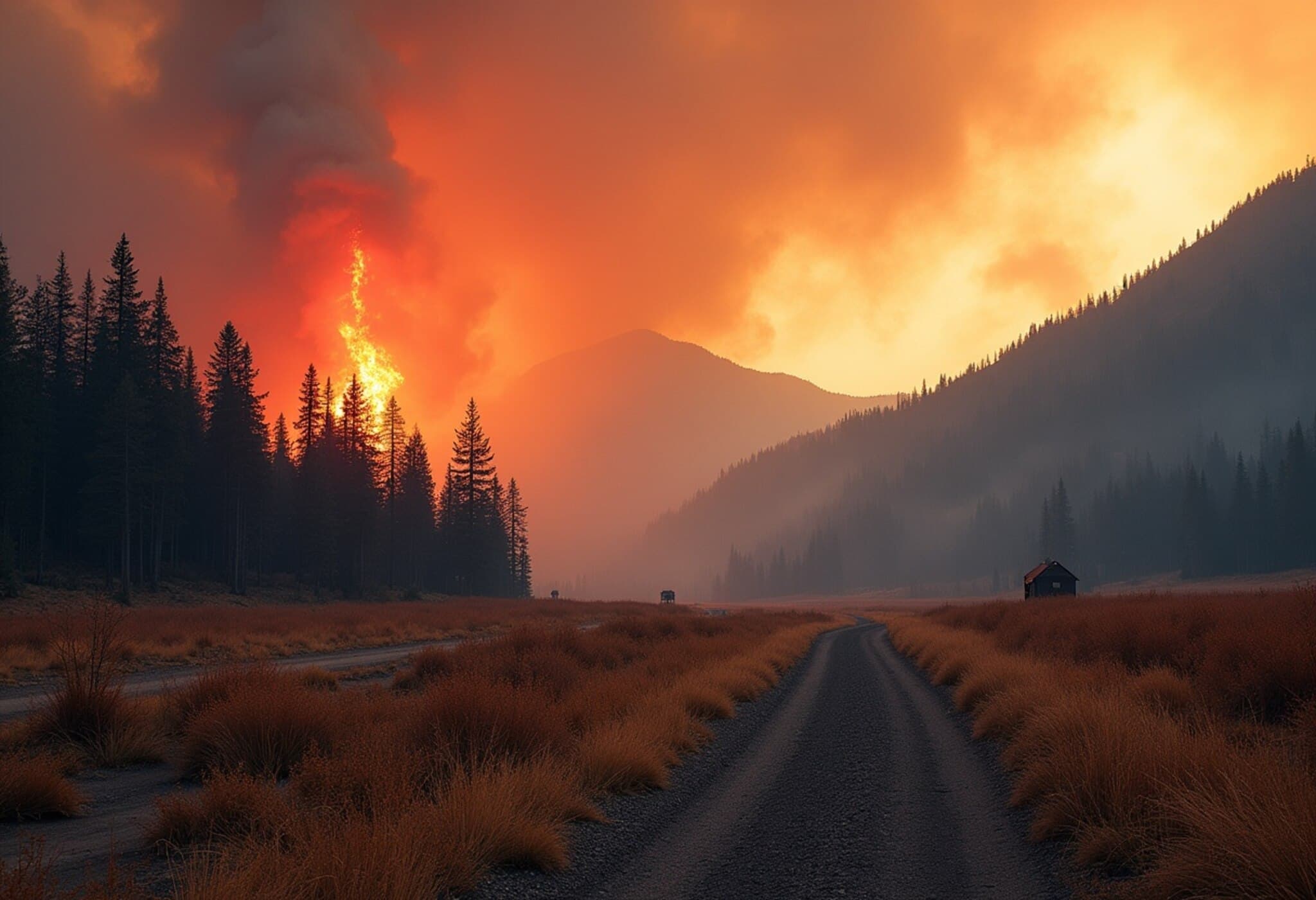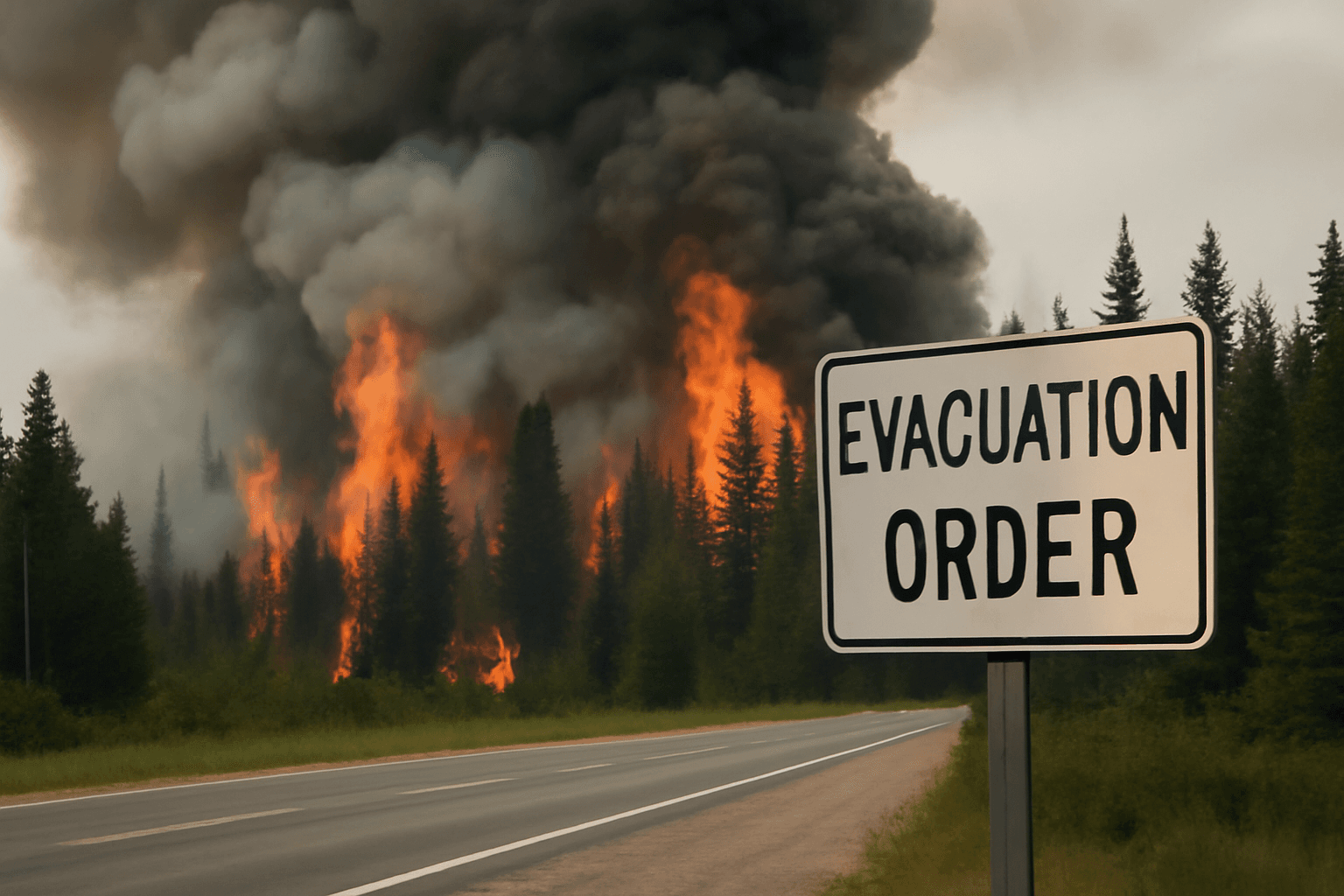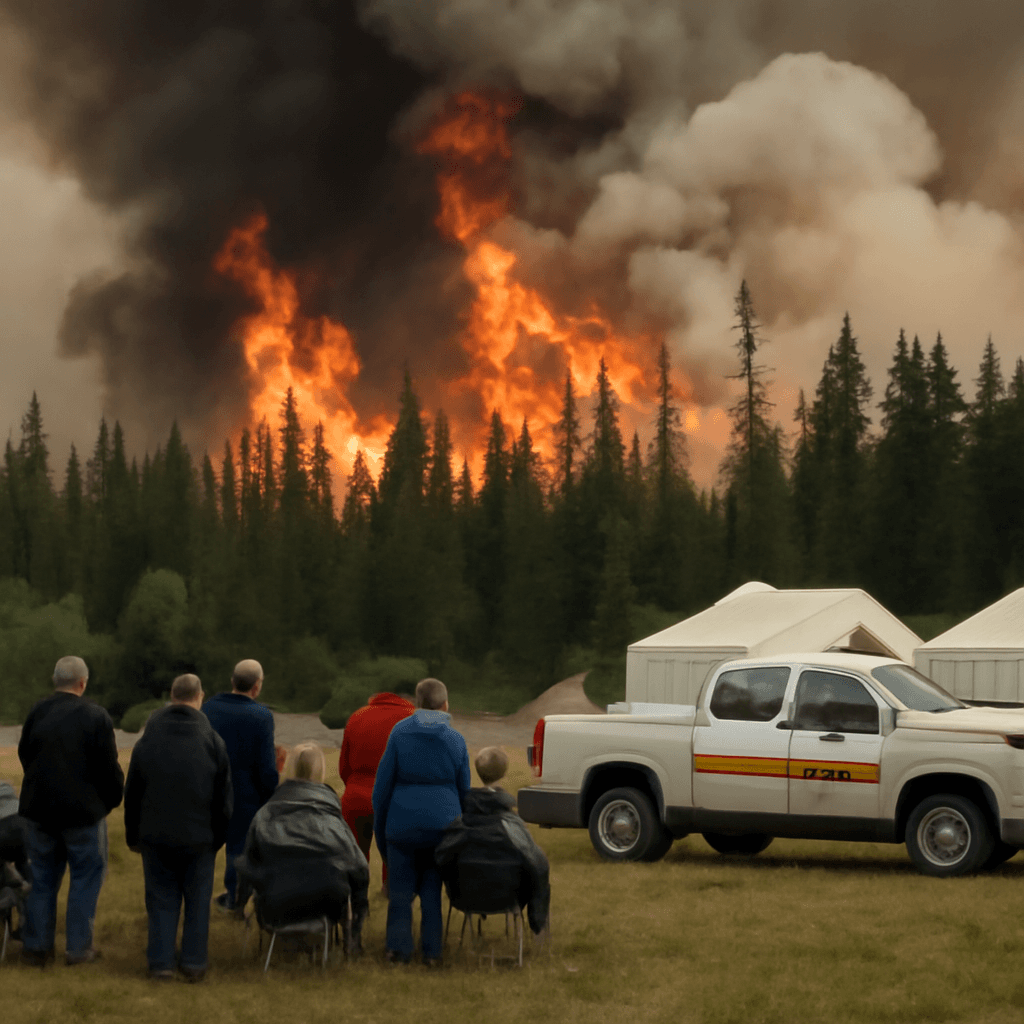Mount Scatchard Wildfire Prompts Urgent Evacuations Near Chase
A swiftly expanding wildfire near the town of Chase, British Columbia, has forced authorities to issue mandatory evacuation orders and declare a local state of emergency. Originating on June 30, the Mount Scatchard fire was identified as human-caused and has since grown dramatically, threatening nearby communities.
Fire Progresses Quickly Amid Harsh Weather Conditions
Initially spotted as a small blaze covering approximately 0.25 hectares west of Chase, the fire escalated rapidly due to hot, dry weather and shifting winds. By the evening of the same day, it had expanded to around 35 hectares. The dry environment, coupled with temperatures soaring near 30°C and low humidity, made containment efforts particularly challenging.
Authorities report the blaze is moving mostly south and east, heading away from the Village of Chase and Neskonlith communities, though the situation remains fluid.
Evacuation Orders Implemented for Vulnerable Communities
The Neskonlith Indian Band declared a state of local emergency and ordered residents on reserve lands most at risk to evacuate immediately. Nearly 40 properties on the reserve have been affected, with evacuees directed to the Adams Lake Recreation and Conference Centre for shelter and support.
Meanwhile, the Thompson-Nicola Regional District (TNRD) issued evacuation alerts for a handful of properties near Harper Lake, preparing residents for potential further displacement.
Coordinated Firefighting Efforts Underway
The BC Wildfire Service has mobilized substantial resources, including 22 ground personnel, two helicopters, seven skimmer planes, and additional fixed-wing aircraft, focusing on suppressing the wildfire and protecting key infrastructure.
Most of the fire exhibits Rank 2 behaviour, indicating a low-intensity surface fire with visible flames, but sporadic flare-ups have escalated to Rank 3 intensity. A strict no-fly zone around the fire zone helps ensure the safety of aerial firefighting crews.
Cause of Fire Under Investigation
Preliminary investigations suggest the fire may have been ignited by a truck descending from Harper Mountain carrying hay, which caught fire and ignited surrounding vegetation. Authorities emphasize the ongoing hazards associated with human activities in such vulnerable environments.
Public Advice and Safety Measures
- Residents are urged to stay vigilant and monitor official updates closely.
- Avoid the affected fire zone to allow emergency personnel unhindered access.
- Respect all road closures and avoid non-essential travel near the blaze.
- Refrain from flying drones in the area, as they interfere with aerial firefighting operations.
- Prepare for potential evacuation if conditions change.
Fortunately, the Trans-Canada Highway remains open, although motorists may experience reduced visibility due to smoke.
Community Response and Outlook
Local leaders, including Neskonlith Kukpi7 Irwin Wai, expressed confidence in the professional firefighting teams working tirelessly to contain the blaze. The joint response from BC Wildfire Service, local fire departments, and community support services illustrates a strong commitment to safeguarding residents and minimizing damage.
While the fire’s rapid growth remains concerning, officials continue to monitor the situation closely with the hope that containment efforts will soon bring the wildfire under control.
This is an ongoing story. Updates will be provided as new information becomes available.

